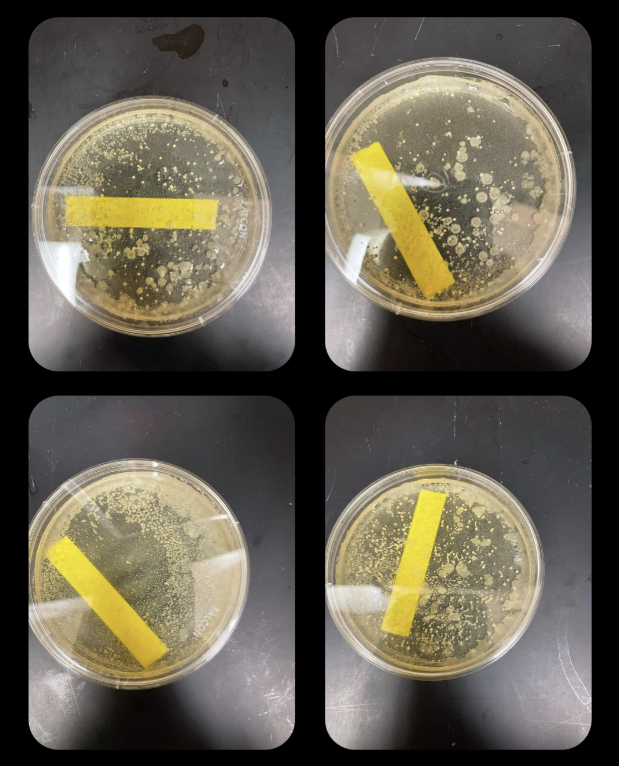Student scientists explore antibiotic resistance and facial moisturizers
Petri dishes with samples of facial moisturizers inside. Clover Marshall’s project used these to study the ingredients in the moisturizers.
The science that students learn in classrooms was first discovered by scientists years, decades, or centuries ago. The textbooks are not complete though– there is more to be discovered, and Wilsonville’s own student scientists are paving the way!
Sophomore Aasha Patel worked “to prevent E. coli from forming biofilm” in her project last year. She was inspired by her biology class, in which she’d been learning about antibiotic-resistant bacteria. She wanted to explore more affordable solutions, since “the price of antibiotics along with the number of deaths caused by antibiotic-resistant bacteria are rising.”
Her idea was to expose the cultures of E. coli to light. “E. coli has been proven to move under blue light and so I reasoned that if the bacteria are forced to move, it prevents a buildup of the released compounds that make up biofilm,” she said. She explained that biofilm is like a shield made of “goop that blocks antibiotics as it grows over time.”
After incubating multiple E. coli cultures under different colors of light, plus a control sample in complete darkness, Patel used analysis methods “such as crystal violet staining” and used statistics to determine the efficacy of her light treatment.
Aasha hopes to continue her engineering journey in the future. She credits her “heightened interest in STEM to the hands-on opportunities ISEF provides, which allowed [her] to get a taste of how real research or product development is done.”
Aside from testing on antibiotic resistant bacteria, students also investigate objects they see and use in daily life.
Senior Clover Marshall tested “natural products in facial moisturizers” to see which ones were the most affordable and had the longest shelf life, because he knows “affordability is a huge issue in natural skincare.” He tested three different recipes in total. Each had a base of shea butter with added jojoba oil, coconut oil, and raw honey as the different factors.
After testing all the recipes, Marshall took conclusive measurements off of his petri dishes over a month. He realized that, in the end, all the ingredients had their own pros and cons.
Marshall is extremely thankful for their ISEF experience. ISEF was great for their college applications and job resumes. In addition, “doing ISEF has introduced [them] to so many great people.”
Patel and Marshall are just two of the countless scientists that make up the WVHS community– ISEF allows all students to explore their own unique scientific interests.











